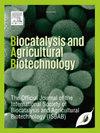Marine natural products for biofouling elimination in marine environments
IF 3.4
Q2 BIOTECHNOLOGY & APPLIED MICROBIOLOGY
引用次数: 0
Abstract
Biofouling is a broad word encompassing marine organisms such as animals, microorganisms, and plants that grow when immersed in both normal and abnormal amounts of saltwater. There are several biofouling species in the water that easily adhere to sea equipment and cause its rapid destruction. The use of antifouling coating or paint can effectively stop marine biofouling. The use of chemical antifouling coatings containing metals such as copper, tin, etc. has been restricted and banned by the International Marine Environment Organization. So, an increasing number of researchers are focusing on eco-friendly antifouling coatings. Within this scope, the use of marine natural compounds with antifouling action has emerged as a significant research area. Marine bioactive compounds are plentiful, inexpensive, efficient, environmentally friendly, long-lasting, and biodegradable, making them ideal for antifouling applications. In this review, we reviewed and discussed the characteristics of biofouling growth and development mechanisms, the sources of marine bioactive compounds with antifouling activity, their chemical structure, and the organisms that they inhibit. This paper fosters marine organisms and their bioactive compounds as potential prospects for future commercial applications, in particular the antifouling activity of marine ecosystems on marine equipment.
用于消除海洋环境中生物污垢的海洋天然产品
生物污损是一个广义的词,包括动物、微生物和植物等海洋生物,它们在正常或异常的海水中生长。水中有几种生物污点,它们很容易附着在海洋设备上,导致设备迅速损坏。使用防污涂料或油漆可以有效阻止海洋生物污损。含有铜、锡等金属的化学防污涂料已被国际海洋环境组织限制和禁止使用。因此,越来越多的研究人员开始关注生态友好型防污涂料。在此范围内,使用具有防污作用的海洋天然化合物已成为一个重要的研究领域。海洋生物活性化合物种类丰富、价格低廉、高效、环保、持久且可生物降解,是防污应用的理想选择。在这篇综述中,我们回顾并讨论了生物污损生长和发展机制的特点、具有防污活性的海洋生物活性化合物的来源、化学结构及其抑制的生物。本文将海洋生物及其生物活性化合物作为未来商业应用的潜在前景,特别是海洋生态系统在海洋设备上的防污活性。
本文章由计算机程序翻译,如有差异,请以英文原文为准。
求助全文
约1分钟内获得全文
求助全文
来源期刊

Biocatalysis and agricultural biotechnology
Agricultural and Biological Sciences-Agronomy and Crop Science
CiteScore
7.70
自引率
2.50%
发文量
308
审稿时长
48 days
期刊介绍:
Biocatalysis and Agricultural Biotechnology is the official journal of the International Society of Biocatalysis and Agricultural Biotechnology (ISBAB). The journal publishes high quality articles especially in the science and technology of biocatalysis, bioprocesses, agricultural biotechnology, biomedical biotechnology, and, if appropriate, from other related areas of biotechnology. The journal will publish peer-reviewed basic and applied research papers, authoritative reviews, and feature articles. The scope of the journal encompasses the research, industrial, and commercial aspects of biotechnology, including the areas of: biocatalysis; bioprocesses; food and agriculture; genetic engineering; molecular biology; healthcare and pharmaceuticals; biofuels; genomics; nanotechnology; environment and biodiversity; and bioremediation.
 求助内容:
求助内容: 应助结果提醒方式:
应助结果提醒方式:


